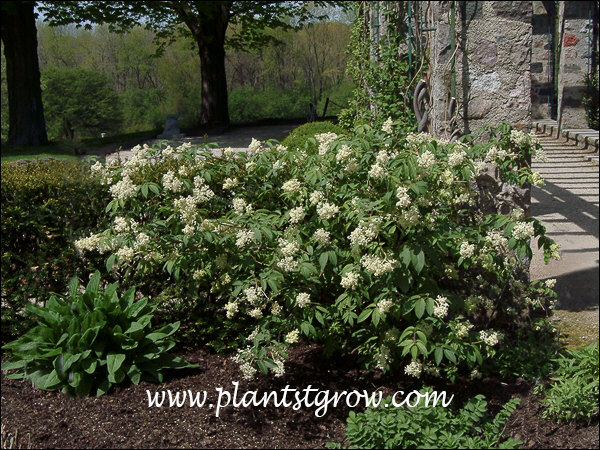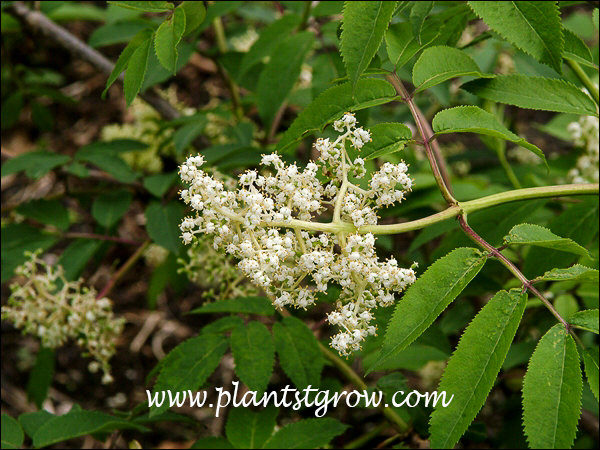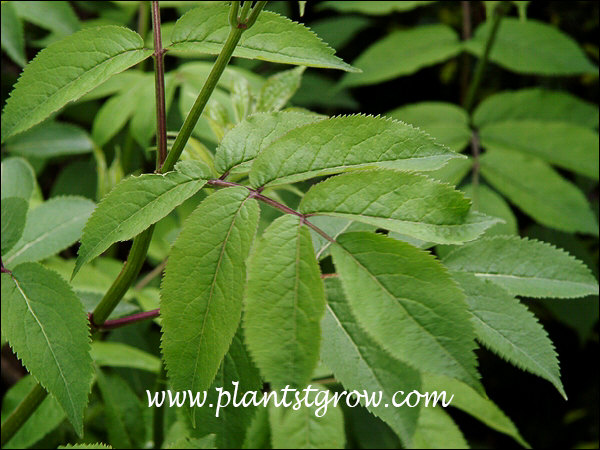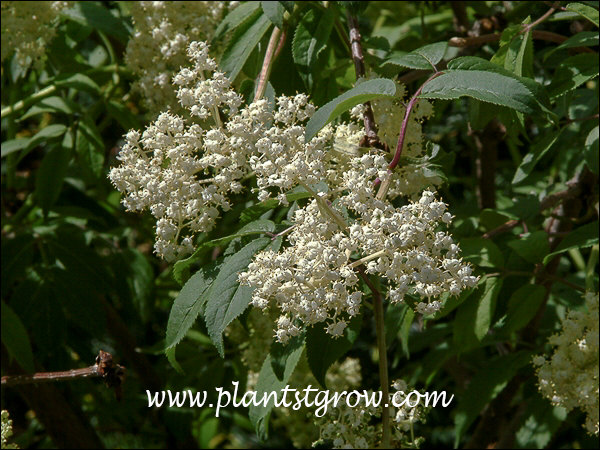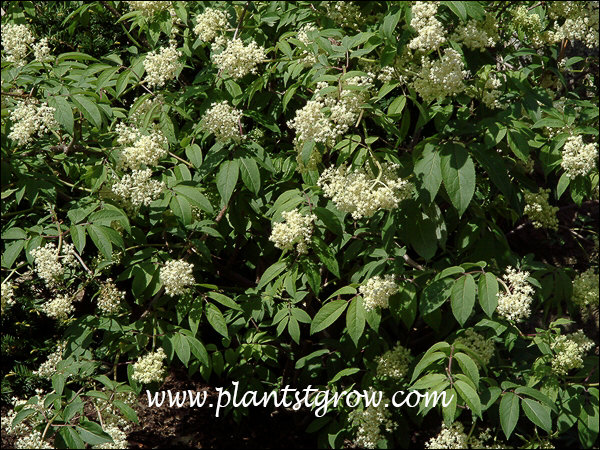| Description | Very similar in appearance to the Common Elderberry but has red berries and flowers earlier. |
|---|---|
| Plant Type | All Plants, Shrubs Deciduous |
| Hardiness Zone | 4-6 |
| Sunlight | Seems to vary in the references from sun to full shade but sun to semi-shade seems to be the most common. |
| Moisture | average to moist, maybe wet |
| Soil & Site | Found growing in average to moist soils in moist woods, fields rocky woods and ravines. |
| Flowers | small creamy white flowers followed by bright red berries. |
| Fruit | red berry-like drupes, food for many forms of wildlife, toxic to humans unless cooked |
| Leaves | green, opposite and pinnately compound with 5-7 serrated leaflets. Usually glossy above and downy below. |
| Stems | large amount of brownish pith (spongy tissue in the center of stems of dicotyledonous plants) |
| Dimensions | Reaches 12-25 feet by 12-25 feet |
| Maintenance | Prune to shape after blooming. |
| Propagation | seeds |
| Native Site | Native to Canada and North America. |
| Cultivar Origin | Introduced in 1812 |
| Misc Facts | Sambucus is derived from the Greek word "sambuca" a string instrument was supposedly made from the wood of the elder. Pubens means downy. Early Native Americans used: the straight stems for arrows, hollowed stems for spouts to gather maple sap or bore holes and made them into flutes. |
| Author's Notes | I have seen this a few times in native sites. Always growing on the edge of a woods or sunny opening. |
| Notes & Reference | #01-Manual of Woody Landscape Plants (Michael Dirr) , #75-Encyclopedia of Nuts, Berries and Seeds (John Heinerman) |

Cart
